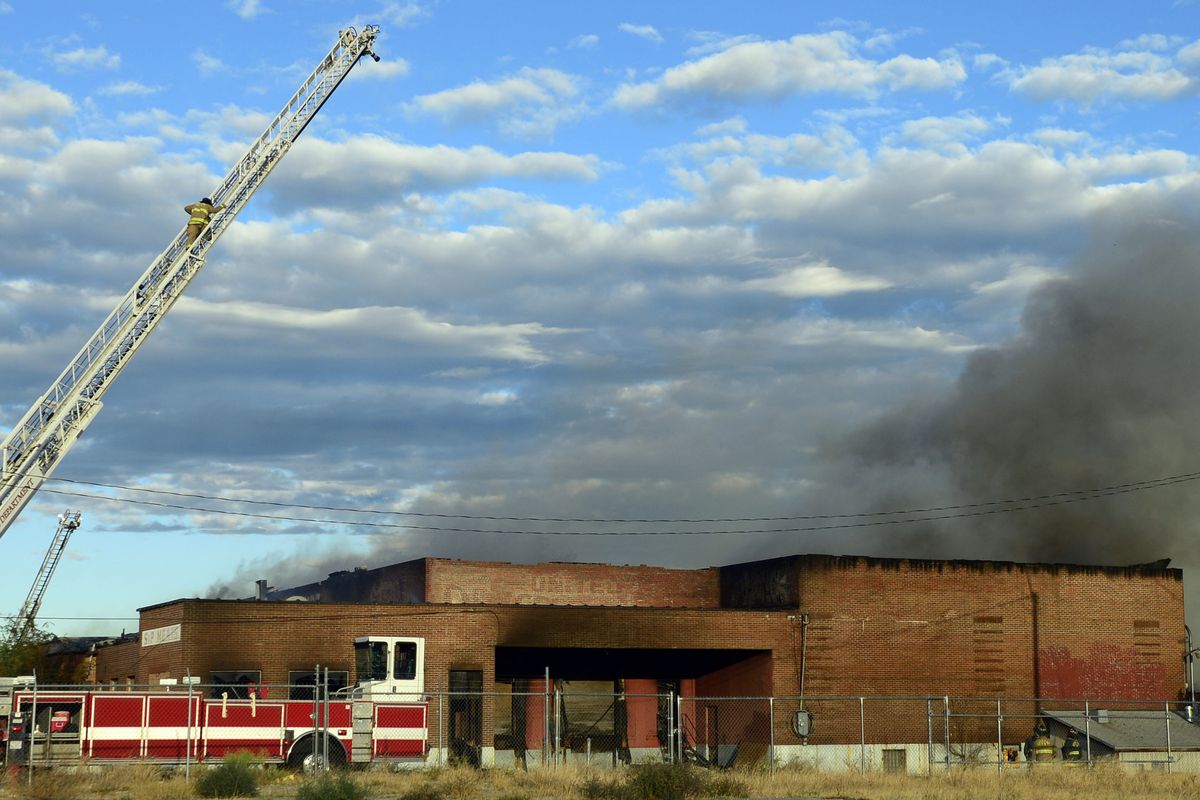Spokane’s air quality was ‘hazardous’ Monday morning even though most monitors showed clean skies – here’s why

Early risers in the Spokane area or people who have text alerts to monitor the region’s air quality levels might’ve seen something alarming Monday morning.
The Spokane Regional Clean Air Agency website clocked the area’s Air Quality Index as high as 336 around 4 a.m. in measuring levels of fine particles with diameters smaller than 2.5 micrometers. With levels of coarse particles between 2.5 to 10 micrometers in diameter, the index peaked at 413.
The Air Quality Index ranks the severity of air pollutants like fine and coarse particles that are typically associated with smoke from fires.
Monday’s readings put the city’s air quality in the “hazardous” category as it was last September due to wildfire smoke. Any reading over 100 is considered unhealthy for high-risk groups.
By around 5:30 p.m., however, the Air Quality Index was back within the “good” range. And even when the levels peaked, residents in some parts of the city Monday might not have seen or smelled any smoke at all.
That’s because the morning spike was caused by a fire at an abandoned warehouse just over a half-mile away from one of the agency’s air quality monitoring stations on East Augusta Avenue.
The fire at the former S&P Meats warehouse at 801 N. Regal St. started around 8:30 p.m. Sunday and burned throughout the night, with flames seen at the roof around 8 a.m. Monday.
The result was a smoky morning for areas near the fire, especially to the north.
That includes the Regional Clean Air Agency’s monitoring station at 3104 E. Augusta Ave., as wind blew smoke from the fire directly toward the monitor.
The number shown on the Spokane Regional Air Quality Agency’s “Current Air Quality” webpage reflects the highest reading of a pollutant at a single station on an hourly basis, said Mark Rowe, monitoring section manager for the Spokane Regional Clean Air Agency.
The reading collected from the Augusta and Fiske site commanded the webpage – for a time, at least.
By noon, the Air Quality Index at the Augusta and Fiske site was down to around 50. By comparison, levels at the Airway Heights monitoring station never crossed 20 from around 1 a.m. through the early evening.
Lisa Woodard, a spokeswoman for the Clean Air Agency, said she believes many website users have gotten used to looking at individual site readings to determine what’s going on in their neck of the woods through years of monitoring wildfire smoke.
“The fact that it doesn’t happen that often, we don’t want to under report, so we are reporting the worst case scenario for air quality,” she said. “I do think people have come to understand that we have multiple monitoring sites. … I’m not sure of a better, more efficient way to report that.”
At the Augusta Avenue station, Rowe said a vacuum pump pulls in air on an hourly basis, filtering through particles so the monitor can detect the loading of the different types of pollutants.
Rowe said spikes like the one that occurred Monday are uncommon.
“It depends. Sometimes somebody could have blowing dust that could be a short duration,” he said. “There’s always the possibility of a structure fire like we had today, but typically wildfire events last longer and the smoke is more widespread versus a structure fire which is going to be more localized and may or may not be picked up by one of our monitors.”
Woodard added, “I don’t remember a structure fire being so close to a monitoring site in the years that I’ve worked here where it caused the (Air Quality Index) to rise that high that quickly.”
In addition to dust storms, short-term spikes in air pollution have also been caused by industrial fires and Fourth of July fireworks, said Andy Wineke, a spokesperson for the state Department of Ecology. Equipment errors can also happen.
The Spokane Regional Clean Air Agency indicated a brief monitoring outage also affected Monday’s readings.
Wineke said air quality officials often get calls from residents who may see or smell smoke even when the monitoring maps show green across their area.
“We put those permanent monitors in where we want to track long-term pollution trends,” he said. “We don’t always know where a fire is going to spring up.”
Wineke said residents who are feeling any effects should take appropriate measures regardless of what the sensors are reading.
“If you are in the vicinity of a fire and you’re having smoke impacts in your home,” Woodard said, “when the fire gets knocked down and the air improves outdoors, I would recommend people opening their windows to clean out the air in their home.”